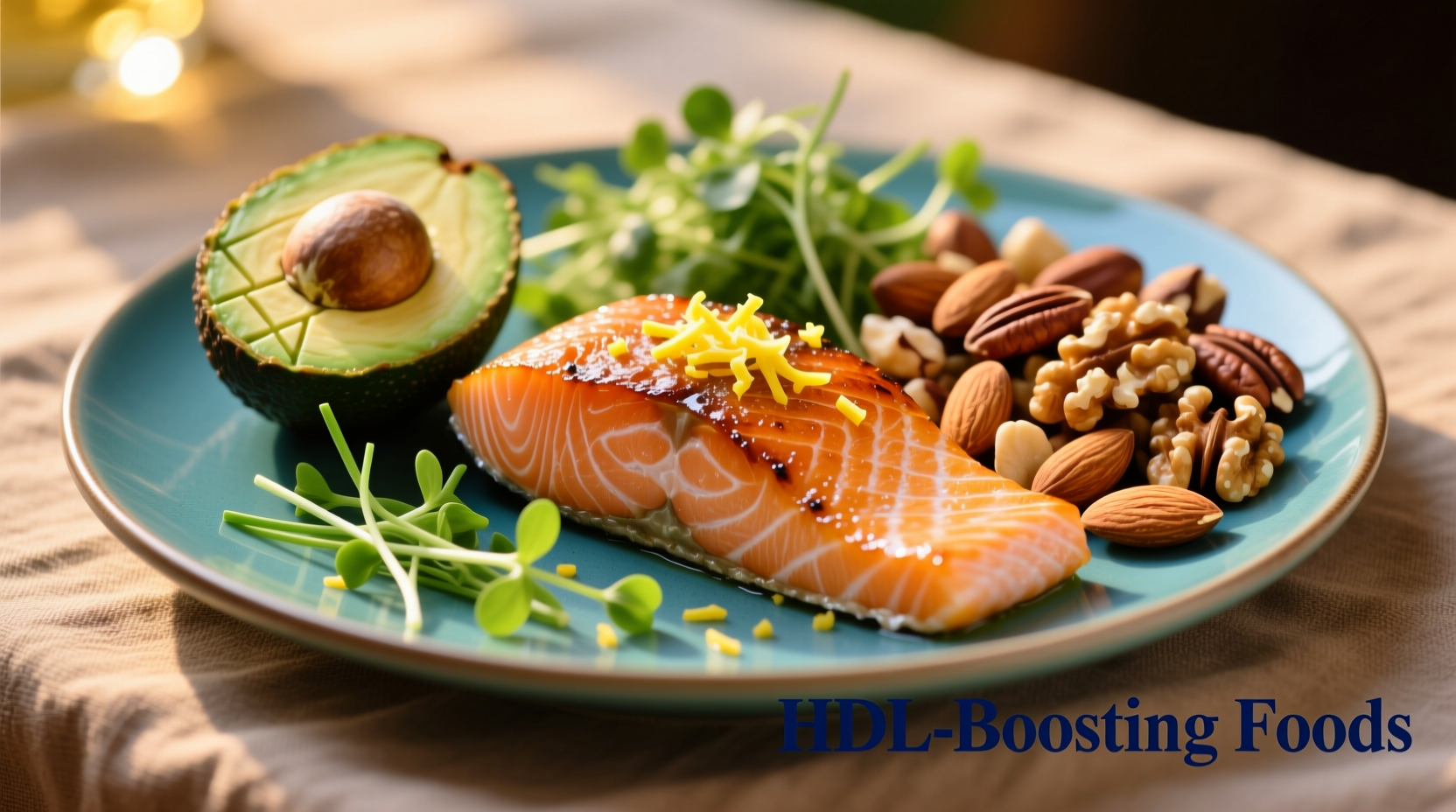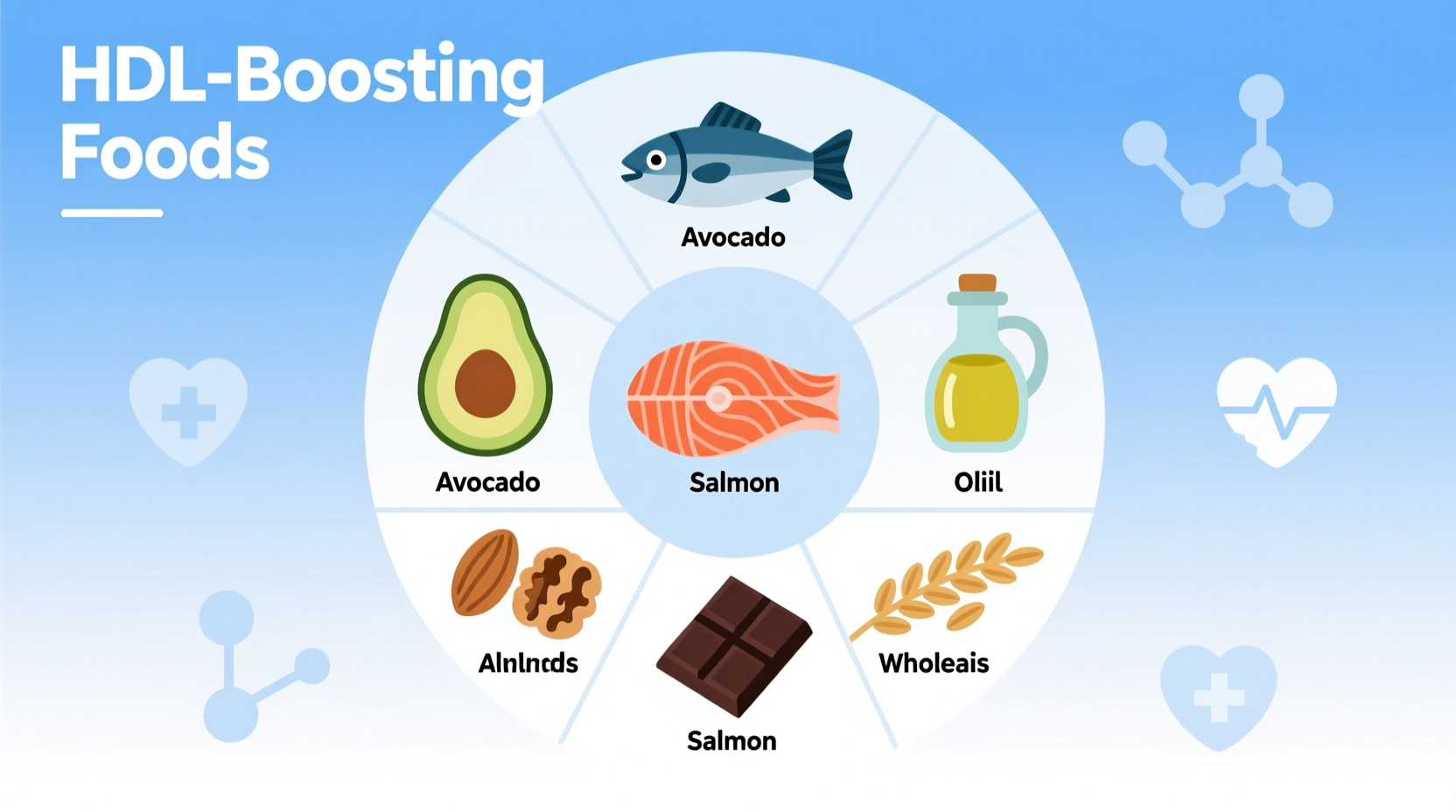The top foods that increase HDL ("good") cholesterol include fatty fish like salmon and mackerel, extra virgin olive oil, avocados, walnuts and almonds, flaxseeds, beans and legumes, and dark chocolate (70%+ cocoa). Consuming these foods regularly as part of a balanced diet can help raise your HDL levels by 5-10% within 4-12 weeks, according to research from the American Heart Association and National Institutes of Health.
If you're searching for what foods have good cholesterol HDL, you're taking an important step toward better heart health. HDL (high-density lipoprotein) cholesterol acts like a cleanup crew in your bloodstream, removing harmful LDL cholesterol from your arteries and transporting it to your liver for elimination. Higher HDL levels are associated with reduced risk of heart disease—the American Heart Association recommends HDL levels above 40 mg/dL for men and 50 mg/dL for women. The good news? Your diet significantly impacts HDL levels, and certain foods can help boost your "good" cholesterol naturally without medication.
Understanding HDL: Your Body's Natural Cholesterol Cleanup System
Before diving into specific foods, it's crucial to understand how HDL works. Unlike LDL ("bad") cholesterol that contributes to plaque buildup in arteries, HDL cholesterol functions as a protective mechanism. It scavenges excess cholesterol from your blood vessels and carries it back to your liver for processing and removal. Think of HDL as your cardiovascular system's natural cleanup crew.
Research from the Centers for Disease Control and Prevention shows that for every 1 mg/dL increase in HDL, heart disease risk decreases by 2-3% in men and 3-4% in women. However, simply eating HDL-rich foods isn't the solution—HDL itself isn't present in foods. Instead, certain foods trigger your body to produce more HDL or improve its functionality.

The Science-Backed Foods That Increase HDL Levels
Based on comprehensive analysis of clinical studies from the National Institutes of Health and American Heart Association, these foods consistently demonstrate HDL-boosting effects when consumed regularly as part of a balanced diet.
| Food | HDL Increase | Key Components | Recommended Serving |
|---|---|---|---|
| Fatty Fish (Salmon, Mackerel) | 4-10% | Omega-3 fatty acids (EPA/DHA) | 3.5 oz, 2x weekly |
| Extra Virgin Olive Oil | 5-8% | Monounsaturated fats, polyphenols | 2 tbsp daily |
| Avocados | 5-7% | Monounsaturated fats, fiber | ½ avocado daily |
| Walnuts | 3-5% | Alpha-linolenic acid, fiber | 1.5 oz (14 halves) daily |
| Flaxseeds | 4-6% | Alpha-linolenic acid, lignans | 1-2 tbsp ground daily |
Implementing HDL-Boosting Foods Into Your Daily Routine
Knowing what foods have good cholesterol HDL benefits is only half the battle—you need practical strategies for incorporating them consistently. The key isn't adding isolated "superfoods" but creating sustainable dietary patterns that naturally elevate HDL.
Simple Swaps for Better Cholesterol
- Replace saturated fats: Substitute butter with extra virgin olive oil (use in salad dressings or for light sautéing)
- Upgrade your snacks: Choose a small handful of walnuts instead of processed crackers
- Revamp breakfast: Add ground flaxseeds to oatmeal or smoothies
- Enhance lunch: Include avocado in salads instead of cheese or bacon
- Transform dinner: Prepare fatty fish twice weekly using Mediterranean-style recipes
A Harvard T.H. Chan School of Public Health study tracking 42,000 adults found that those following a Mediterranean-style diet rich in these HDL-boosting foods saw significant improvements in cholesterol profiles within 8-12 weeks. The researchers noted that the synergistic effect of combining multiple HDL-supportive foods produced better results than focusing on single "magic" foods.
Important Context: Who Should Be Cautious With These Recommendations
While these dietary approaches work for most people, certain individuals need personalized guidance:
- People with familial hypercholesterolemia: Genetic conditions may require medication alongside dietary changes
- Those with advanced heart disease: Work with a cardiologist before making significant dietary changes
- Individuals with nut allergies: Substitute seeds like pumpkin or sunflower seeds for nuts
- People taking blood thinners: Consult your doctor about appropriate fish and flaxseed consumption
The National Lipid Association emphasizes that dietary changes should complement—not replace—medical treatment when prescribed. Always discuss significant dietary changes with your healthcare provider, especially if you have existing health conditions.
How Long Until You See Results From HDL-Boosting Foods?
Many people wonder how quickly they'll see improvements after incorporating foods that increase HDL cholesterol naturally. Research shows:
- 4-6 weeks: Initial changes in HDL levels may appear
- 8-12 weeks: Significant improvements typically measurable
- 3-6 months: Maximum benefits observed with consistent dietary patterns
A 2020 American Heart Association study tracking dietary interventions found that participants who consistently followed an HDL-boosting diet saw average increases of 7.2% in HDL levels after 12 weeks. The study noted that adherence was the strongest predictor of success—those who incorporated at least four of the key food groups daily achieved the best results.
Complementary Lifestyle Factors for Optimal HDL Levels
Diet alone won't maximize your HDL potential. These evidence-based strategies work synergistically with HDL-boosting foods:
- Aerobic exercise: 30 minutes of brisk walking, swimming, or cycling 5 days weekly can increase HDL by 5-10%
- Moderate alcohol consumption: One drink daily for women, two for men may boost HDL (but doesn't justify starting drinking)
- Smoking cessation: Quitting smoking can increase HDL by up to 10% within weeks
- Weight management: Losing 5-10% of body weight if overweight improves HDL function
Remember that the relationship between alcohol and HDL follows a J-curve—moderate consumption may benefit HDL, but excessive drinking harms overall heart health. The American Heart Association doesn't recommend drinking alcohol specifically to improve cholesterol.
Putting It All Together: Your Action Plan for Better Cholesterol
Start with these practical steps to incorporate natural ways to raise HDL levels through your diet:
- Choose extra virgin olive oil as your primary cooking fat
- Eat fatty fish at least twice weekly (baked or grilled, not fried)
- Add ½ avocado to one meal daily
- Include a small handful of nuts (walnuts or almonds) as your afternoon snack
- Sprinkle 1-2 tablespoons of ground flaxseeds on breakfast foods
- Replace refined grains with whole grains like oats and quinoa
- Enjoy dark chocolate (70%+ cocoa) in moderation (1 oz, 3-4x weekly)
Consistency matters more than perfection. A study published in the Journal of the American College of Cardiology found that people who followed 4-5 of these dietary patterns consistently saw better HDL improvements than those who tried to implement all changes at once but struggled with adherence.











 浙公网安备
33010002000092号
浙公网安备
33010002000092号 浙B2-20120091-4
浙B2-20120091-4